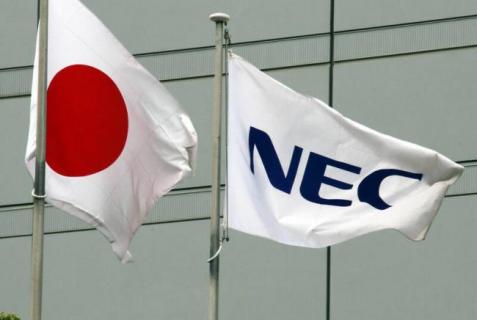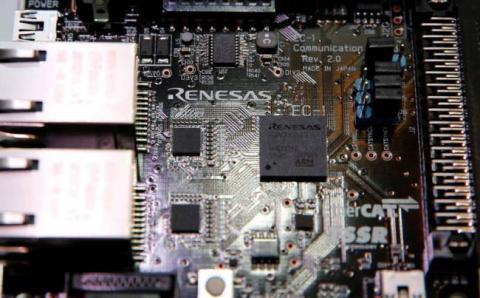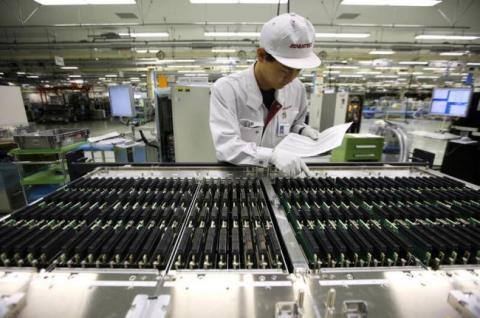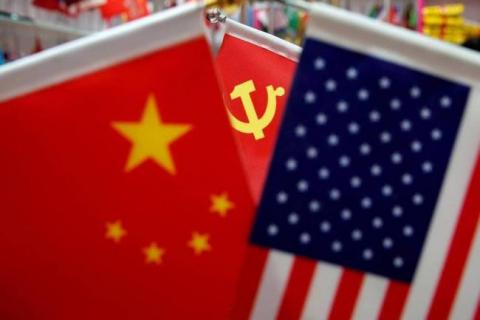![]()
The United States clamps down on China's semiconductor development, just as it suppressed Japan's semiconductor industry back then. (Photo/Institute of Industrial Technology)
SMIC's self-made 7-nanometer chip arouses US crisis awareness
Semiconductors, known as the "new oil" of the 21st century, have become more important after the US-China trade war in 2019, and are even regarded as important strategic materials. Countries are scrambling to promote semiconductor manufacturing and research and development, including China. The production of 7nm chips by SMIC has aroused the sense of crisis in the United States and launched a comprehensive ban on China's semiconductor industry. In addition to prohibiting the export of advanced process chips and manufacturing equipment to China, it has also attracted allies such as Japan and the Netherlands to join them. Join the sanctions against China.
This move by the United States is reminiscent of Japan, which was once a semiconductor powerhouse but eventually declined 40 years ago. At that time, Japan’s share in the global semiconductor market was gradually shrinking due to the suppression of the United States. Now the United States seems to be gradually taking China. Pushed to the situation in Japan back then.
In 1980, the global semiconductor market accounted for more than 50%, threatening the United States. In 1970, Japan invested in the "very large integrated circuit" (VLSI) plan, and private enterprises and the government jointly invested more than 70 billion yen (about NT$16.3 billion) to actively develop DRAM technology. In 1973, Due to the oil crisis in the West, the economy has stagnated, and the Japanese electronics industry has continued to expand, driving the growth of the Japanese economy and semiconductor industry.
Looking back at that time, the United States, which was the leader of the global semiconductor industry, was caught up and even surpassed by Japan in 1980. This period can also be said to be the most glorious heyday of the Japanese semiconductor industry. Japan’s semiconductor exports to the United States turned from a deficit to a surplus.
By 1987, among the world's top five semiconductor companies, NEC, Toshiba, and Hitachi took the top three, and Japan's share of the global semiconductor market exceeded 50%, while the United States took the top three. It fell to 37%, which gradually aroused the dissatisfaction and disgust of the American society towards Japan. At that time, the friction and competition between the semiconductors of the United States and Japan had been pushed to the highest peak.
![]()
SMIC mass-produced 7-nanometer chips and shipped them to customers, prompting the United States to expand sanctions.

NEC was once the top 5 semiconductor factories in the world. (Bloomberg)
The two major agreements brought down Japanese semiconductors
In order to curb the development of Japanese semiconductors, the United States resorted to a series of measures. First, it signed the "Plaza Agreement" with Germany, France, Britain, Japan and other countries to promote the appreciation of the yen and solve the problem of the US trade deficit. The strengthening of the yen has reduced the competitiveness of the manufacturing industry. The 1986 "U.S.-Japan Semiconductor Agreement" forced Japan to open up the intellectual property rights and patents of the semiconductor industry; and the price of semiconductors must match the pricing set by the U.S. Department of Commerce; it must also ensure that the market share of U.S. semiconductors in Japan can increase to 20%.
Not only that, the United States implemented anti-dumping measures in 1987 and imposed 100% punitive tariffs on Japan. Various agreements suppressed Japan, and its semiconductor industry began to decline since 1990.

Japanese media pessimistically predict that Japan’s semiconductor market share in the global market may drop to zero in 2030. The picture shows the Japanese Renesas Electronics substrate. (Reuters)
Japan's lost semiconductor market share may drop to zero by 2030
In 1989, Japanese semiconductors accounted for 53% of the global market, especially DRAM memory. However, in 2015, it fell to less than 10%. , but "Nikkei" predicts that by 2030, Japan's semiconductor market share in the world may be reduced to zero.
After the decline of Japanese semiconductors, the United States supported neighboring South Korea and Taiwan to develop the semiconductor industry. South Korea succeeded Japan as a DRAM power, while Taiwan specialized in wafer foundry. The field is still the leader in the chip industry, and more than 90% of the world's key semiconductor raw materials are still provided by Japan. Among them, the core raw material for manufacturing chips - photoresist, is an important key to determine chip yield and performance.
After the outbreak of the Japan-South Korea trade war in 2019, Japan imposed export controls on South Korea's semiconductor raw materials, which severely damaged the South Korean semiconductor industry. It can be seen that Japan is still an indispensable and important role in the global semiconductor supply chain.

Japan supplies key materials and equipment needed to produce chips around the world. The picture shows Advantest (Bloomberg), a major Japanese semiconductor test equipment manufacturer
Technology decoupling between the United States and China makes it difficult for Chinese semiconductors to survive
Looking back at the current situation in China, in addition to the limited development of the semiconductor industry due to the US-China technology war, there are still many internal chip research and development projects that have been thundered and unfinished, and due to the government's active subsidies, corruption of high-ranking officials has extended to chaos. In addition, , There is also the problem of semiconductor talent shortage, which makes the overall situation in China even more precarious.
Furthermore, the Chinese economy has declined due to the implementation of strict epidemic prevention measures for many years. The closure of the city, power cuts, and the housing market crisis have highlighted the sluggish economy in China. The overall environment has also been in recession due to the global economy. The demand for the semiconductor industry has gradually weakened, which has greatly impacted China, which focuses on mid-to-low-end manufacturing processes, has seen the US-China relationship continue to cool down. If the US continues to expand sanctions on China in the future, it will be even more difficult for China to increase its self-sufficiency in the semiconductor industry, and its development prospects are not very optimistic.


